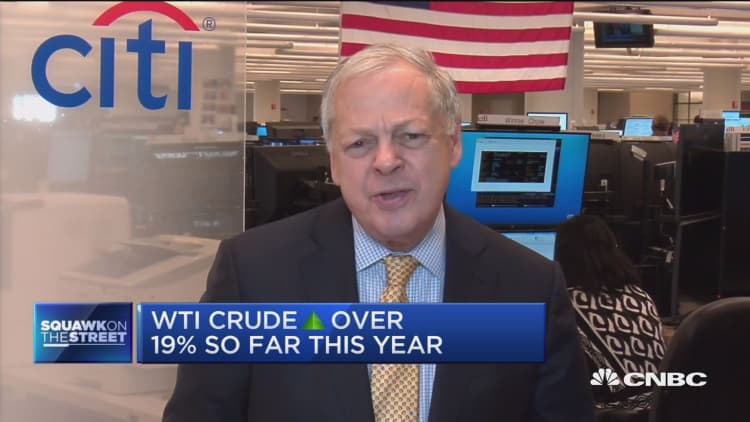
The volatility that rocked oil prices last quarter may have moderated, but Citi's global head of commodities research says the market's "nightmare" is not over yet.
The bank expects oil supply to tighten in the first quarter as top exporter Saudi Arabia cuts production, but Citi's Ed Morse also forecasts a soft spot for demand in the opening months of 2019. Further complicating matters are a series of geopolitical and market dramas that will play out through the beginning of May.
This follows a three-month period that saw oil prices spike to nearly four-year highs as the market braced for U.S. sanctions on Iran. Prices then tumbled more then 40 percent to 18-month lows, blowing up long-held trading strategies and forcing drillers to rethink their 2019 budgets.
"The volatility every year is a good $20 to $25 a barrel between low and high," Morse said. "December was kind of the nightmare for the world where the swings were $50 at a low, $86 at a high and $68 for the average of Brent."
"We're not out of this. There's no real range that we think is going to hold for any length of time," he told CNBC's "Squawk on the Street" on Monday.
Brent crude: 6-month performance
Oil prices hit fresh two-month highs on Monday before tumbling as much as 3.6 percent. Morse chalked up the daily move to currency impacts and expectations that closely watched U.S. crude stockpiles rose last week.
In the coming weeks and months, the oil market will have to deal with a lot of moving parts, Morse says.
At present, new U.S. sanctions on Venezuela have displaced half a million barrels per day of heavy crude supplies. Meanwhile, the U.S. and China are holding talks to settle a trade dispute that could dent global growth and shrink fuel demand if left unresolved.
Major oil producers led by OPEC will meet in March and April to review their deal to curb output and drain oversupply. Then in May, President Donald Trump must decide whether to renew six-month waivers that allow several nations to continue buying Iranian crude.
"We have plenty of potentially bullish moves in the market" following a soft patch for demand before the seasonal uptick in fuel consumption begins around May, says Morse.
Citi expects Brent crude to continue rising into the mid-$60 range and hit $70 before year end. That will be enough to keep in play another wild card: surging U.S. oil production.
While some American drillers are pulling back spending after the price collapse, $65-$70 Brent will encourage U.S. producers to allocate more money to drilling, says Morse. Citi sees U.S. West Texas Intermediate crude's discount to Brent narrowing, preventing benchmark WTI from falling below the $50-$55 range.
"We think that's enough to keep U.S. production growth at a good million barrels a day, no matter what OPEC does on price level," said Morse.


